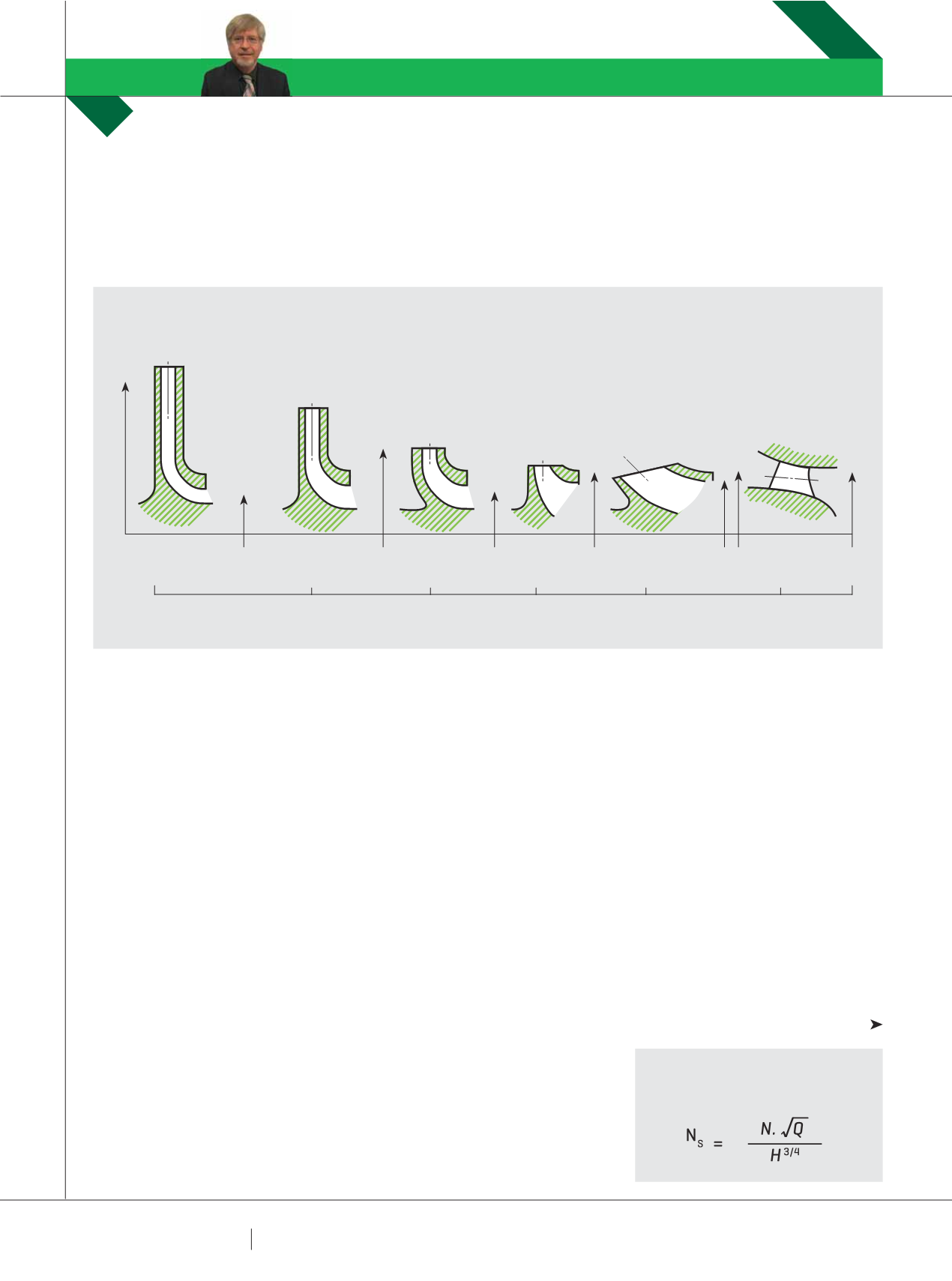

6 4
PLUMBING CONNECTION
SPRING 2015
UNDERSTANDING PUMP CURVES
E
veryone wants more efficient
pumps and pumping systems. In
some industries, the Engineers
and system designers create massive
stumbling blocks by specifying a
maximum allowable pump running
speed.
Putting arbitrary limits on running
speeds will often preclude the best
pump selection.
For clean liquid services, unless
there are difficult suction conditions,
there is no reason to fix a maximum
limit on pump running speed. Energy
efficiency has never been more
important and yet we are still stuck
with these archaic; dare I say ignorant
specifications. Why?
Is it because a slow running pump
is perceived to have a “smoother”
velocity profile, less turbulence and
hence ought to be more efficient? As
we will see later, this perception is
plain wrong.
Is it because a slow running pump
is perceived to have inherently lower
internal wear, better bearing life and
improved reliability? This perception is
demonstrably equally untrue.
Could it be for reasons of noise and
vibration? Yes, these aspects can be
worse with a higher running speed, but
not always. If these are the real issues,
why not simply specify the allowable
noise and vibration limits as direct
requirements?
If you have read this far, you may
be getting a little grumpy because
much of this seems counter intuitive.
Ought not a slow running pump be
less stressed than a high speed
unit? The real question ought to
be; will a slow running pump of the
same performance be less stressed
than a higher speed model doing the
same duty? For the same flow and
same developed head, a slow speed
pump will be larger and will be a
different shape than a higher speed
unit designed for the same hydraulic
duty. We are thus comparing different
shaped pumps.
Fig 1 shows a range of impeller
shapes versus a pump design
parameter called “Specific Speed” (Ns).
The formula for Ns is shown in Fig 2.
Ns is primarily a shape factor and
this parameter is extremely useful
as an aid to understanding why some
pumps are more efficient than others.
Here it is. Specific Speed (Ns) is a
simple formula involving the RPM,
Pump Flowrate at Best Efficiency Point
(BEP) and Head per stage at BEP.
In Australia it is most common to
use metric units of cubic metres per
hour, metres and rpm; however; when
comparing pump design data it is
important to ensure that you are using
the correct units.
RON ASTALL
ANSWERS THE QUESTION: ARE YOUR PUMPS RUNNING TOO SLOWLY?
PUMP SCHOOL
RON ASTALL
FIG 1: PUMP IMPELLER SHAPES
FIG 2: SPECIFIC SPEED
FORMULA:
HEAD (PER STAGE)
FLOW RATE
RPM
500
15,000
1,000
2,000
3,000
5,000
10,000
SPECIFIC SPEED
RADIAL TYPE
FRANCIS TYPE
PROPELLER TYPE
MIXED FLOW TYPE
RADIAL FLOW
AXIAL FLOW
















